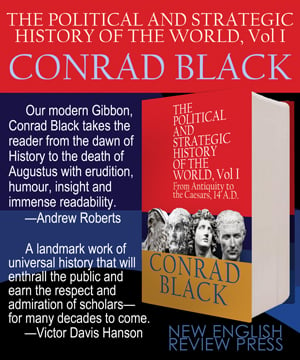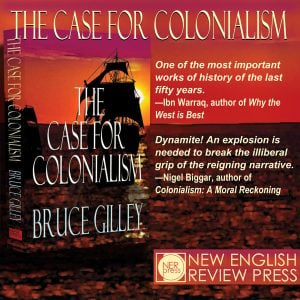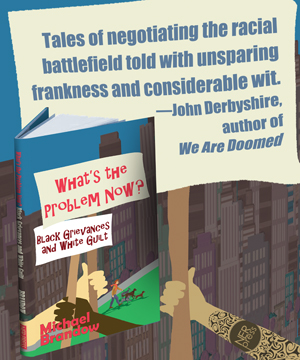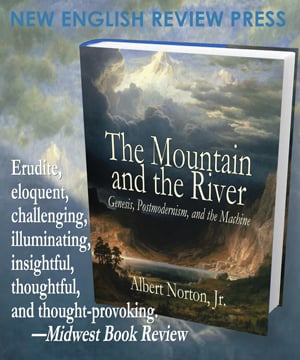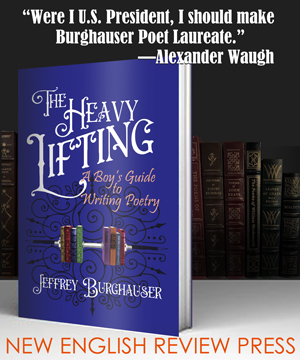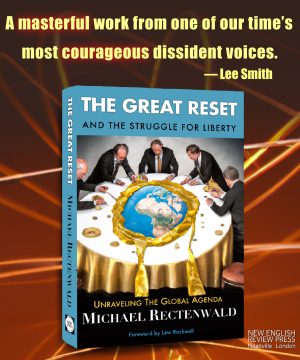by Robert Wolfe (December 2009)
Anyone familiar with the European anti-Semitic literature of the 19th and early 20th centuries will be struck by the extent to which this literature is directed not only against the Jews but also against the Freemasons. In the so-called “Protocols of the Elder of Zion” and similar expositions of a mythical Jewish conspiracy to rule the world, the Freemasons are assigned a major role in the alleged conspiracy.
There are two obvious reasons for this attitude. In the first place, Freemasonry was generally perceived as tolerant of Jews. Jews could become Freemasons – although not many did – because members were not required to believe in Christianity, only in the existence of a “Supreme Being.” Freemasons were in favor of freedom of religion and took the lead in 18th and 19th century England, France and the United States in efforts to remove restrictions on the right of Jews to practice their religion in peace. And in the second place, Freemasonry originated as a secret society, whose very existence was concealed from the public prior to 1717. Known both for secrecy and pro-Jewish sentiments, the Freemasons were perfect candidates for inclusion in fantasies of a secret Jewish plot to rule the world.
There is also a third, slightly less obvious reason for the condemnation of the Freemasons in anti-Semitic literature. The 19th century Roman Catholic church viewed Jews and Freemasons as its principal foes. A large proportion of the anti-Semitic tracts of this period were written either by practicing Catholics or by people from a Catholic background. The Roman Catholic church also sponsored numerous attacks on the Freemasons during this same period, including an anti-Masonic Papal encyclical entitled “Humanum Genus,” issued by Pope Leo the Thirteenth in 1884. It was the Roman Catholic church which first linked the Jews and Freemasons together and developed many of the accusations against both groups which were later to be taken up by other anti-Semites. Jews and Freemasons were perceived by the Roman Catholics as the vanguard of modernism, the secret sponsors of atheism, secularism and hedonism in the modern world.
Although I come from a Jewish background, the knowledge that Jews and Masons were said to be involved in a conspiracy together never aroused much interest in the Freemasons in me. I thought the whole idea of a secret society rather silly, and what I knew of Masonic doctrine did not impress me. Some claimed the Masons were derived from the workmen who built the First Temple in Jerusalem in the days of Solomon. Others asserted the Masons grew out of the guilds of stonemasons who built the great cathedrals in Europe during the Middle Ages. The first claim is clearly absurd and the second only led me to associate the Masons with the persecutions of Jews which took place in the shadow of those same cathedrals. Since the Masons were condemned by my enemies, I assumed that there must be something good about them, but I was not strongly impelled to find out what it was.
What started me thinking along different lines was a book published in 1989 by John J. Robinson entitled Born In Blood: The Lost Secrets Of Freemasonry. Robinson was an American amateur historian with an interest in the Middle Ages and the Crusades. His study of the Knights Templar, a medieval crusading order, led him to the view that the Freemasons were formed as a result of the suppression of the Knights Templar by the Roman Catholic church in the early 14th century. In England the Templar order had several months advance warning of impending arrest, and most members were able to go into hiding. Robinson thinks they formed a secret society which then played a major role in the English uprising of 1381 known as Wat Tyler’s rebellion. Robinson brings out that Tyler is also a Masonic title for the sentry who guards the door to Masonic meetings. Robinson argues that the Masons developed an ambivalent attitude towards Christianity as a result of the fact that many of the members of the Knights Templar were tortured and executed by agents of the Roman Catholic church at the time of the suppression of the order in 1307. Born In Blood is written in a reasonable, factual style and it convinced me that the Masons were in fact derived from the Knights Templar just as Robinson said. Particularly convincing is Robinson’s derivation of a whole series of obscure Masonic terms from medieval French, the language of the Knights Templar in England as well as France. Tyler he derives from “tailleur,” which now means “tailor” but whose literal meaning is “one who cuts,” an appropriate term for a sentry who was supposed to stand with a drawn sword in his hand.
Seeing the Masons as derived from the Knights Templar made them appear both better and worse than I had previously thought. On the one hand, their status as a secret society no longer seemed so silly. The Masons did not originate as medieval guild members indulging a love of ritual but as hunted fugitives who had every reason to conceal their very existence from the authorities. Robinson theorizes very plausibly that also in later generations the Masons attracted genuine rebels against Church and State for whom secrecy was a necessity and not a game. On the other hand, the Knights Templar were associated with many more crimes against the Jewish people than any stone masons could possibly have been. The Knights Templar grew out of the First Crusade of 1096, whose members murdered whole communities of Jews in the Rhineland before departing for the Middle East. When they arrived in Jerusalem these same Crusaders murdered every single Jew in the entire city. The Knights Templar were clearly fanatic anti-Semites prior to their suppression in the 14th century. How did it happen that such people should have evolved into the tolerant, free thinking Masons of the modern era?
Or did they? The Masons, after all, remained just as focused on Jerusalem as the Knights Templar had been. Robinson reveals that when Masons are initiated into full fledged membership, they are taught the legend of Hiram Abiff. He was supposedly the real architect of the Temple of Solomon, who was murdered by traitors. Robinson sees him as an allegorical symbol for Jacques de Molay, the last Grand Master of the Templar order who was burnt at the stake in 1314 on orders of the Pope. The Masons are enjoined to continue his work, which amounts to a call to continue the European quest to conquer Jerusalem. Freemasonry originated in England, which as it turned out was the European country which did in fact follow in the footsteps of the Crusaders and conquer Jerusalem at the end of World War One. And Robinson himself, who was not a Mason, ends his book with a disquisition on how the Temple Mount is sacred to three religions, all three of which should have some place of worship on the site of the Mount.
Reading Robinson’s book hardened a conviction in me that there is something called the Judeo-Masonic tradition which has played a major role in the history of the past 500 years or so. At the core of this tradition is the memory of the Temple. The Knights Templar were called that because their original headquarters was located on the Temple Mount, in the mosque of al-Aksa, which they had seized from the Muslims. And before the Christians and Muslims there were Jews, who died in the millions defending Jerusalem and the Temple against the Assyrians, the Babylonians, the Greeks and the Romans. It was we Jews who built the Temple; if its ground is holy, it is because we made it holy. Its secret is our secret. We started the Judeo-Masonic tradition, but it was the Masons who turned it into a vehicle of world rule. England, France and the United States, the three main centers of Freemasonry, have between them come close to ruling the world over the course of the past several hundred years. They did so by espousing “the modern.” Did Leo the Thirteenth get it right is “the modern” a Judeo-Masonic plot?
Deism
What I am calling Judeo-Masonic thought might also be called Deism. Many of the leading Deists of the 18th and 19th centuries were in fact Masons. The Deists maintained that there must be a God because how else could the universe have come into being? They maintained that this God had so arranged the universe that good deeds would be rewarded and bad deeds punished. However, they did not believe in the divinity of Christ or in the need for God to directly intervene in the day-to-day workings of the universe. God’s will was incorporated in the very structure of the universe in the form of laws of nature. The task of science was to discover these laws and apply them to the betterment of the human condition. Most of the leaders of the American Revolution of 1776 and the French Revolution of 1789 held views of this kind.
Deism is what Jews and Masons had in common. However, Judaism is not the same as Deism. YHVH does intervene quite frequently in daily life in the Torah. Deism as a historical movement was a radical form of Protestantism, one which denied the divinity of Christ while still regarding him as a great teacher. Deism grew up in scientific circles in England, France and the United States and placed great emphasis on the concept of natural law. Deism was gradually accepted by many Jews, including Einstein, but it was not originally a Jewish doctrine. YHVH does not govern by natural law but by sheer willpower. However, Deism is compatible with Judaism in a way that Christianity is not. Christianity is suffused with a spirit of blame relative to the Jewish people, while this spirit is absent from Deism. And even if the concept of natural law is not originally Jewish, it can be incorporated into Judaism without any great disturbance. Natural law is really just another word for the will of God, for there can be no law without a legislator.
The thing is, in reality there are no natural “laws,” only tendencies, regularities and patterns. As many historians of science have pointed out in recent decades, the foundations of the modern scientific outlook are religious. To me it seems obvious that the universe always was and always will be. To speak of it being “governed” by “laws” appears to me an archaic mode of speech reflecting a need to prove the existence of God. I am therefore looking at Deism from the outside, for I do not accept its basic precept, faith in the existence of God. People are always telling me that this is also the basic precept of Judaism, but I still have trouble believing them. To me Judaism means attachment to the Jewish people. The words “Judaism” and “Jewish” are both derived from the Hebrew word “Yehudah,” the name of the ancient kingdom called “Judah” in English. Judaism thus means literally loyalty to Judah. Jerusalem was the capital of Judah, and the Temple was the heart of Jerusalem.
Judaism can thus be interpreted to mean loyalty to the Temple, and it was thus that the Masons interpreted it. The Judeo-Masonic tradition is therefore something deeper and more extensive than Deism. Deism is probably best understood as the public form of this tradition. It claimed to be a religion but it was really a critique of Christianity. Its fundamental precept was denial of the divinity of Christ, and it was this precept which linked it to Judaism. Deism was not a religion because it lacked a ritual and ceremonies of its own. Robespierre and his followers attempted to create Deist rituals at the height of the French Revolution but their attempt was still born. Deism remained essentially an intellectual stance and for this reason it gradually declined in popularity over the course of the 19th and 20th centuries. It was supplanted on the one hand by Marxism, whose critique of Christianity was even more radical than that of the Deists, and on the other hand by a wide variety of “post-modern” relativist doctrines. But both Judaism and Freemasonry were older than Deism, and they have survived it as well.
The difference between Freemasonry and Deism is brought out very clearly in The Temple And The Lodge by Michael Baigent and Richard Leigh. This book was published in the same year as Robinson’s Born In Blood and also argues that Freemasonry originated with the Knights Templar. But for some reason, Baigent and Leigh made no reference to Robinson, nor Robinson to them. And although they develop the same thesis, the two books differ sharply in their view of Freemasonry. While Robinson sees it as a revolutionary force, Baigent and Leigh stress its conservative character. They see the Templar tradition as perpetuated by the pro-Catholic Stuart dynasty in England, whose Jacobite supporters they view as the true founders of modern Freemasonry. They pay no attention at all to the anti-Christian, Deist side of Masonic thought and instead stress its roots in Christian mysticism and the Rosicrucians. Whereas Robinson devoted a number of chapters to possible Templar-Masonic involvement in Wat Tyler’s rebellion of 1381, Baigent and Leigh do not even mention it.
On the other hand, Baigent and Leigh do go into great detail on the role of Freemasonry in the American Revolution of 1776. But even here, they manage to depict the Masons in a conservative light. They see the main vehicle of the spread of Masonry from England to the American colonies in the “field lodges” active within the British army during the French and Indian War. American officers such as George Washington were drawn into Masonry through their contacts with British officers at this time. Baigent and Leigh see the British and American military Masons as striving to remain united but being pulled apart by non-Masonic radicals on the American side such as Paine and Jefferson. However, they also point out that most of the initiators of the Boston Tea Party were Masons, as were at least 9 of the 56 signers of the Declaration of Independence. And on page 181, they summarize the radical impact of 18th century Freemasonry as follows
Insisting on a universal brotherhood which transcended national frontiers, English Freemasonry was to exert a profound influence on the great reformers of the eighteenth century – on David Hume, for example, on Voltaire, Diderot, Montesquieu and Rousseau in France, on their disciples in what was to become the United States.
But given their view of Masonry as a crypto-Catholic, neo-Platonic mystical cult, it is hard to understand why it was so intimately associated with all the major European and American revolutionary movements of the 18th and 19th centuries.
In any case, it is evident that Freemasonry, like Judaism, overlapped with but was not identical to Deism. Moreover, Freemasonry contained the rituals and ceremonies which Deism lacked. It was a religion in all but name, while Deism was a religion in name only. Viewed as a religion, Freemasonry differed from Deism in its focus on the Temple. Baigent and Leigh not only trace this focus to the Templars but also see them as the source of many of the radical ideas later upheld by the Masons. Thus they assert (page 54) that the Templars were “almost certainly “tainted” with religious heterodoxy, if not full fledged heresy” and (page 58) that “certainly, during years of activity in the Holy Land, the Temple had absorbed a good deal of both Judaic and Islamic thought.” They cite little or no evidence for these assertions, which appear to be derived from the accusations directed against the Templars by the French monarchy and the Roman Catholic church at the time of the suppression of the Templar order in the early 14th century. Once the Templars were suppressed, however, they very definitely developed anti-Christian attitudes. Authenticated Templar grave sites from the 14th century onwards are distinguished by their complete lack of Christian symbolism of any kind.
If the Templars were heretics prior to their suppression, the only clear indication of their heresy was their focus on the Temple. Although neither Robinson nor Baigent and Leigh seem to be aware of it, pre-Templar Christian tradition was thoroughly hostile to any thought of rebuilding the Temple. When the Christians gained control of the Roman empire, including Jerusalem, in the 4th century CE, they used the former site of the Temple as a garbage dump. At no point during the next 300 years of Christian control of the Temple Mount did the Christians show the slightest interest in treating the site as a holy place. The respect shown by the Templars both to the site of the Temple and to its memory was a major novelty in Christian circles. It was no doubt prompted by the fact that the Muslims had built a number of religious structures on the site of the Temple Mount. By selecting the mosque of al-Aksa on the Temple Mount as their headquarters, the Templars testified to their desire to not only rival but also imitate the Muslims. This impulse might well have been viewed as heretical by the Roman Catholic church, but so long as the Templars played a leading role in the Crusades, their novel attitude was tolerated by the Catholic hierarchy. Only after the Crusaders were entirely expelled from the “Holy Land” at the end of the 13th century did the Templars become expendable. At this point their focus on the Temple could easily have become a major factor in the decision to suppress them. Certainly the Roman Catholic church never showed any subsequent interest in the site of the Temple, whose destruction by the Romans has always been pictured in Catholic circles as a divine punishment visited on the Jews for their failure to recognize Christ.
Jews And Masons
In line with their tendency to trace the radical ideas of Freemasonry to conservative, Catholic sources, Baigent and Leigh even go so far as to assert that the Templars were friendly to Jews. They state on page 136 “Although nominally “knights of Christ”, the Templars, in practice, maintained cordial relations with both Islam and Judaism, and are even said to have harboured ambitious plans for reconciling Christianity with its two rival faiths.” They advance no evidence for this statement, nor do they make any reference to the role of the founders of the Templar order in the massacres of Jews carried out during the First Crusade. On the other hand, it may be significant that Philip 4, the French king who was responsible for the suppression of the Templar order, was also responsible for the attempted expulsion of all Jews from France in 1306. Robinson sees Philip’s attack on the Jews as a kind of model and precedent for his attack on the Templars in 1307, one year later. Be that as it may, there is no doubt that the Freemasons in later centuries became associated with a tolerant attitude towards Jews. But even here the picture is more complex than is usually admitted by Christian historians.
Jacob Katz brings out the complexities in Jews and Freemasons in Europe, 1723-1939. In England, where Freemasonry originated, all Jews had been expelled in 1290, only a short time before the suppression of the Templars. Jews did not return to England until the 17th century, and even then only a trickle. So far as is known, the first English Jew to become a Mason was Edward Rose, who was admitted to a lodge in London in 1732. By the 1750s a number of English Jews had become Masons, but most of them were segregated in a “Jewish lodge.” In France, Jews were initially eligible for membership when the first lodges were formed in the 1730s, but the French “Grand Lodge” banned Jews in 1755 in reaction to Catholic attacks on the Masons as Jewish-inspired. Jews were generally barred from the French lodges until 1791 when the French Revolution extended French citizenship to the few Jews who lived in France at that time. Jews had been completely expelled from France in 1394 and only a small number had returned over the course of the 17th and 18th centuries.
The situation was at its most complex in Germany, whose 18th century Jewish population was considerably larger than in England or France. Jews were completely barred from the German Masonic lodges until 1780, when a certain Hans Heinrich von Ecker und Eckhofen founded a new lodge in Vienna known as the “Order of the Asiatic Brethren.” Jews were not only eligible for membership but, as Katz notes on page 26, the lodge was founded with “the avowed purpose of accepting both Jews and Christians in its ranks.” However, members were required to eat a meal of pork with milk as part of their initiation. Even so the lodge was attacked as Jewish-dominated and went into decline after 1790. A “Tolerance Lodge” open to Jews was founded in both Berlin and Hamburg around this same time, but neither lodge was recognized by the other German lodges as official. Finally, in 1807 a lodge open to Jews was founded in Frankfurt, home of the largest and most influential Jewish community in Germany. This lodge became known as the “Jewish lodge,” but most German lodges continued to bar Jews throughout the 19th century. In fact, from the 1880s onwards, Jews were even excluded from the few German lodges which theoretically admitted them.
Katz’s study makes it clear that attitudes towards Jews among European Freemasons did not greatly differ from the dominant attitudes among their non-Masonic compatriots. In the 18th century, only the English Masonic lodges generally admitted Jews, and as Baigent and Leigh note on page 181 with reference to 18th century England “Anti-Semitism became more discredited in England than anywhere else in Europe, with Jews not only becoming Freemasons, but also gaining an access hitherto denied them to social, political and public life.” The same was true in the American colonies, but there too there were very few Jews. All the same, it cannot be denied that the Freemasons everywhere were in the vanguard of the movement to extend citizenship to Jews in the 18th and 19th centuries. Among the early leaders of the French Revolution, whose decision to grant citizenship to Jews in 1791 was the decisive step in what came to be known as “Jewish Emancipation”, most were Masons, including Lafayette, Danton, the abbé Sieyès and Camille Desmoulins.
If there was a Judeo-Masonic conspiracy at work in these events, it was embodied in the person of Moses Dobrushka. Dobrushka was in fact a Jew, a Mason and a conspirator all rolled into one. He was born in 1753 in Austria into a wealthy Jewish family. In 1775, under the influence of the “false Messiah” Jacob Frank, Moses Dobrushka converted to Christianity and took the name of Franz Schoenfeld. He became a prominent figure in Viennese high society and in 1778 was elevated to the Austrian nobility as Franz von Schoenfeld. He went on to become one of the founders and leading members of the Masonic lodge known as the “Asiatic Brethren.” Arthur Mandel recounts the story in great detail in his biography of Jacob Frank, The Militant Messiah. According to Mandel, the founders of the lodge sought to attract members with the promise of revealing the secrets of Kabbalah. Mandel continues as follows, on page 90
But here they needed a “Cabbalist”, and they found him in the person of Schoenfeld-Dobrushka. He managed to sell them a bill of goods, a hodgepodge of Jewish-Christian symbols which turned the Cabbala into a secret science for the forecasting of eclipses of the sun or moon and other natural phenomena. Some gullible persons, fascinated by the mysterious spell of the Cabbala, actually fell for it and joined the order, among them the future king of Prussia, Frederick Wilhelm II.
Von Schoenfeld also developed ties with the Austrian royal house and accompanied Leopold 2, the king of Austria, to Pillnitz in 1791 where the Austrians and Prussians decided to declare war on revolutionary France.
However, Leopold 2 died soon thereafter and the new ruler of Austria, Franz 2, did not like von Schoenfeld. The latter therefore fled to Strasbourg in France where he assumed the name of Sigismund Gottlob Junius Brutus Frey. Generally known as Junius Frey, he became active in Jacobin circles, and in 1792 he moved to Paris, where he established ties with the leading Jacobins of the day. His sister, now named Leopoldine Frey, married the head of Robespierre’s secret police, Francois Chabot, “noted for his debauchery” according to Mandel on page 136. However, Frey was accused of being an Austrian or Prussian spy, and in 1793 he was arrested. He was sent to the guillotine on April 5, 1794 together with Danton, whom Robespierre accused of being in league with Frey in a “Foreign Conspiracy.” To this day no one has succeeded in figuring out just what Dobrushka really stood for and what was the logic of his successive transformations into von Schoenfeld and Frey. A more perfect embodiment of the anti-Semitic stereotype of a Judeo-Masonic conspirator is difficult to imagine, yet Dobrushka has been forgotten by Jews, Masons and anti-Semites alike. He was indeed a prophet of the modern age, whose literary works include a Book of Entertainment (in Hebrew), David’s War Songs (in German) and Social Philosophy (in French).
Dobrushka seems to be the exception that proves the rule. In general Jews and Masons continued to occupy separate worlds even after the Masonic lodges began to admit Jews. Having already converted to Christianity, Dobrushka obviously had no problem eating pork with milk, but most Jews were repelled by the numerous Christian elements in Masonic symbolism and lore. Radicals and free-thinkers in Christian eyes, the Masons look much like Christians from a Jewish point of view. Their famous members, men like George Washington, the Marquis de Lafayette, Simon Bolivar, Giuseppe Garibaldi, Winston Churchill and Franklin Roosevelt, are never viewed as non-Christians. The “Asiatic Brethren,” it is true, featured numerous Jewish themes in their ritual and doctrine, but they did not survive much longer than Moses Dobrushka. On the whole the Jewish contribution to the Judeo-Masonic tradition remained miniscule. Yet miniscule as it may have been, it was nonetheless significant, for it was difficult to think of the Temple without thinking of the Jews. Lurking somewhere at the heart of the Judeo-Masonic tradition is, of course, Zionism.
Zionism
Numerous historians have already drawn attention to the Zionist strand in English Protestant tradition which formed an important part of the background to the Balfour Declaration of 1917. This theme was emphasized by Nahum Sokolow in his path-breaking History of Zionism 1600-1918, and it provided the main focus for Barbara Tuchman’s later work, Bible And Sword. Both Sokolow and Tuchman show in great detail how many English Protestants, beginning in the 1600s, became convinced that the return of the Jews to the “Holy Land” would signal the start of the Messianic Era, which they associated with the “Second Coming” of Christ. Sokolow saw these views as intimately bound up with the decision to readmit Jews to England and grant them civil rights. Tuchman was more sceptical of British motives, stressing the extent to which Protestant Zionism was merely a pretext for Christian and English conquest of the “Holy Land”. Yet despite the close ties between Freemasonry and Protestantism in England, neither Sokolow nor Tuchman saw fit to delve into the Masonic component in English Protestant Zionism.
Tuchman did argue, however, that Protestant Zionism was actually rooted in the Crusades. On page 39 she described the “self-identification with the ancient though not the contemporary Jews” on the part of the Crusaders, which enabled them to see themselves “as the rightful inheritors of the Holy Land.” Nowhere was this self-identification stronger than among the Templars. Baigent and Leigh, on page 92 of The Temple And The Lodge, describe the Templars as follows
Among biblical texts, they constantly invoked Joshua and Maccabees, promoting themselves as latterday avatars of the army that toppled the walls of Jericho, the army that nearly defeated Rome in the years just prior to the Christian era.
We may safely assume that this self-identification with Joshua and the Maccabees did not incline the Templars to a favorable view of the Jews of their own day, but it did put them somewhat at odds with Catholic tradition. And once the Templars had been repudiated by the Roman Catholic church, it is easy to see how this self-identification might have evolved in a pro-Protestant and even pro-Jewish direction.
The great merit of Robinson’s book is that he develops a plausible theory of how this transformation might have taken place. He sees the fugitive Templars in England and Scotland forming underground networks closely aligned with other foes of Church and State. These networks then provided the organizational leadership for Wat Tyler’s rebellion. Templar involvement in this rebellion is strongly suggested by the fact that the rebels made a big point of attacking everywhere the property and persons of the Order of the Hospitallers. The Hospitallers were the big rivals of the Templars, and it was they who had received the bulk of the confiscated Templar properties in England. Wat Tyler’s rebellion was suppressed but according to Robinson the Templar underground found a refuge in Scotland, which had become independent of England with the aid of Templar fugitives. From Scotland in turn emerged Freemasonry at the end of the Middle Ages.
That Freemasonry did in fact emerge from Scotland is clear. This much was shown by David Stevenson in The Origins Of Freemasonry, which was published in 1988, one year before the appearance of Born In Blood and The Temple And The Lodge. Stevenson, who was a professor of Scottish history at the University of St. Andrews, had no interest whatsoever in the Templars. He completely accepted the conventional view that Freemasonry had grown out of medieval guilds of stonemasons; his goal was simply to prove that these were Scottish and not English stonemasons. Stevenson believed that Freemasonry was the creation of “one man”, a certain William Schaw, who became “master of works” for the Scottish stonemasons at the end of the 16th century. Schaw issued “statutes” for the Scottish stonemasons in which Stevenson detected an occult influence. Stevenson’s view of Freemasonry as Schaw’s original creation is extremely dubious, but Stevenson does present extensive evidence tending to show that Freemasonry first surfaced as a distinct tendency at the court of James 6 of Scotland, who went on to become James 1 of England in 1603. James himself is thought to have been a Freemason, and the Masonic movement took firm root in England under his descendant, the Stuart king Charles 2.
Because the Stuart dynasty, which originated in Scotland, was hostile to the Puritans, both Stevenson and also Baigent and Leigh tend to associate Freemasonry with a kind of crypto-Catholicism. James 1 was a Protestant, however; the “King James Version” of the Bible is named after him. Scotland, moreover, was a Protestant stronghold throughout the 16th century. After stressing the fact that William Schaw was a Catholic, Stevenson adds, on page 123 “William Schaw may have been a Catholic, but his lodges were protestant, loyal to the established church.” Many of the participants in Wat Tyler’s rebellion had also held views similar to those of the later Protestants. They were called Lollards, followers of the teachings of John Wyclif, who is generally viewed as a precursor of Protestantism. And throughout its history, Freemasonry was always viewed with extreme hostility on the part of the Roman Catholic church. No sooner were the first Masonic lodges formed in France in the 1730s than a Papal bull was issued in 1738 banning them. Whatever crypto-Catholic tendencies it may have displayed, Freemasonry was therefore generally identified with rejection of Papal authority. More often than not this rejection assumed a specifically Protestant form, as shown by the popularity of Freemasonry among the Protestant English and Americans.
Tuchman, in Bible And Sword, saw a connection between Protestantism, rejection of Papal authority and Christian Zionism. As she put it on page 80
Wherever the Reformation took hold the Bible replaced the Pope as the final spiritual authority. The Palestinian origins of Christianity were stressed more and more in order to reduce the pretensions of Rome.
The Masons too claimed “Palestinian origins,” and pre-Christian ones at that. Their focus on the rebuilding of the Temple could and did align them even more closely with the Jews than non-Masonic Protestants. But it would prove little to put together a list of all the Masons who associated themselves with the Zionist concept in some way. Such a list would be difficult to compile in any case due to the extreme reluctance of historians of Zionism to look into the Masonic connection. This reluctance is a natural reaction to the anti-Semitic charges of a Judeo-Masonic conspiracy. Zionism certainly did not grow out of a conspiracy, whether Judeo-Masonic or any other. It was a broadly based movement rooted in 3000 years of Jewish history. The question is rather whether Judeo-Masonic thought tended to create a favorable context for the success of the Zionist movement. This question clearly has to be answered in the affirmative.
That Freemasonry was inherently favorable to Zionism is suggested by the fact that the three main supporters of the Zionist movement in modern times, England, France and the United States, were also the three main centers of Freemasonry. In the United States, today Israel’s strongest supporter, at least 13 Presidents have been Freemasons, including Harry Truman, who was responsible for United States recognition of Israel in 1948. Freemasonry helped to create a receptive climate for Zionism by its legitimation of Judaism, by its association with movements for national independence and above all by its focus on the Temple. Although this focus could be interpreted in many different ways, it was difficult to resist the implication that the Jews would have to participate in some manner in the rebuilding of the Temple. This view in turn conditioned Freemasons to accept the Zionist movement when it arose among Jews in the 19th and 20th centuries. Zionism was in no sense their creation, but without their aid its success would have been considerably less likely.
The Temple
That the Temple was central to Freemasonry from the start is shown by Stevenson in The Origins Of Freemasonry. After a thorough examination of the few references to Freemasonry in 17th century Scottish texts, Stevenson concluded that the early Scottish lodges were consecrated to the memory of the Temple. He put it this way, on page 149:
The lodge of the early Scottish masons was clearly intended to be Solomon’s Temple. It does not seem to have been mentally furnished with the pillars of the temple, but they were present through the use of their names as secret words, and the references to the lodge being orientated like the temple and to the first lodge having been held in the temple porch help stress this identification – as does the grave of Hiram, the temple’s architect. This being the case, the “work” to which the master puts the masons in the lodge was presumably regarded as symbolising the building of the temple. In the religious literature of the day “building the Temple” was frequently used as a synonym for building the new Jerusalem, the creation of a true godly community.
Stevenson’s testimony is all the more suggestive in that it never occurred to him that this focus on the Temple might have derived from the Templars. Stevenson also had no interest in a Jewish connection, but noted on page 133 that a 1689 Scottish text referred to the “Mason Word” as a “Rabbinical mystery.” Stevenson theorized that “as the words of the Mason Word were connected with Solomon’s Temple it was natural to connect their use with Jewish tradition.”
The point about the Temple is that it symbolized not only “the creation of a true godly community” but also physical force. It was built at the height of the power and prestige of the kingdom of Judah and it survived only so long as the Jewish people was able to defend it. Physical force was also the main concern of the Templars, who were a military order who engaged in constant military training. Physical force was also a prominent element in Masonic culture, as shown by the long list of generals and other military men who were Masons. It is just this point which makes Robinson’s theory of the origins of the Freemasons so plausible. Wat Tyler’s rebellion was also an expression of physical force, and one which was remarkably well organized and destructive. It is hard to understand how a group of neo-Platonic mystics could have given rise to most of the great revolutionary movements of the 18th and 19th centuries, but it is easy to see how a radical underground formed by ex-Templars might have done so.
The moral of the story is that the Temple matters. The modern Zionist movement paid little attention to the issue of the Temple, and yet it has continually surfaced all the same. The seizure of the Temple Mount by the Israeli armed forces during the Six Day War in 1967 was viewed by many as a dream come true. Since 1967 Israel has marked time, retaining physical control of the Temple Mount but leaving its administration entirely in the hands of Muslim authorities. Forty years have elapsed in this manner, but forty years are but a moment in the 3000 year history of the Temple and its legend. Sooner or later the issue of the Temple will have to be addressed. Who will decide its future – Jews, Muslims, Christians, the United Nations? To me it appears equally inconceivable that the Temple Mount will remain entirely Muslim or that an entirely Jewish “Third Temple” will replace the existing Islamic structures. Some compromise will have to be devised, but what this compromise might be no one really knows. One thing is for sure the Judeo-Masonic concept of the rebuilding of the Temple remains very much alive, and much depends on how this concept will be translated into practice in the years to come.
To comment on this article, please click here.
To help New English Review continue to publish interesting and informative articles such as this one, please click here.
If you have enjoyed this article and want to read more by Robert Wolfe, please click here.
- Like
- Digg
- Del
- Tumblr
- VKontakte
- Buffer
- Love This
- Odnoklassniki
- Meneame
- Blogger
- Amazon
- Yahoo Mail
- Gmail
- AOL
- Newsvine
- HackerNews
- Evernote
- MySpace
- Mail.ru
- Viadeo
- Line
- Comments
- Yummly
- SMS
- Viber
- Telegram
- Subscribe
- Skype
- Facebook Messenger
- Kakao
- LiveJournal
- Yammer
- Edgar
- Fintel
- Mix
- Instapaper
- Copy Link


